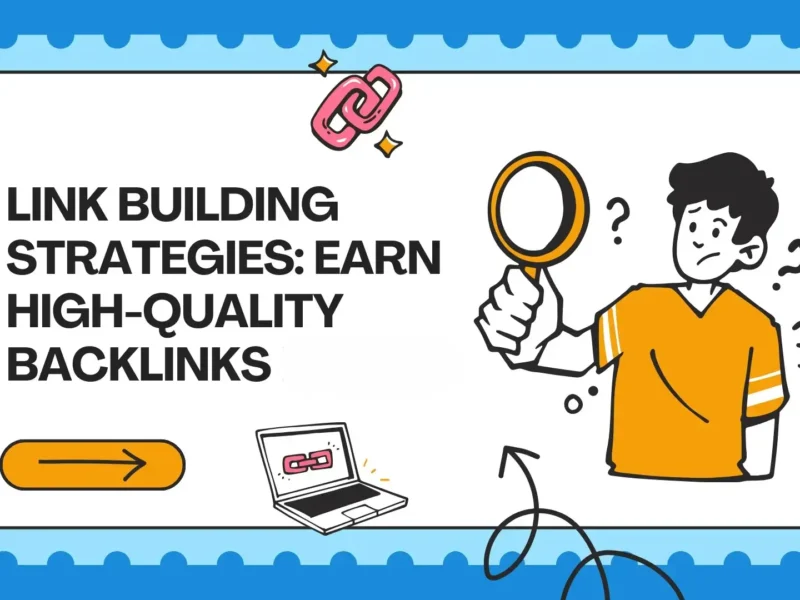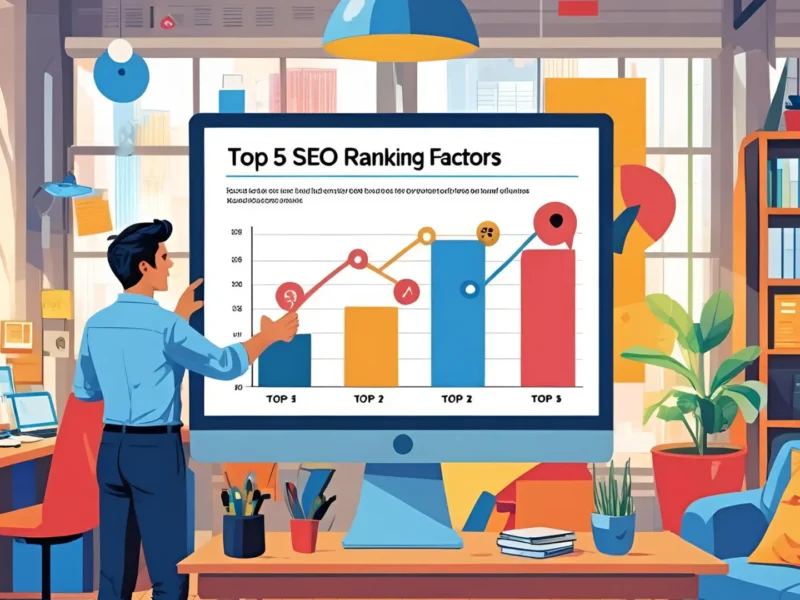In the intricate world of web development, where functionality and user experience reign supreme, it’s easy for the crucial aspect of Search Engine Optimization (SEO) to take a backseat. Yet, for any website to truly thrive, it needs to be discoverable. And while content and link building often grab the headlines, the bedrock of successful SEO lies in its technical foundation. This is where a comprehensive technical SEO audit comes into play. For developers, understanding and implementing this checklist isn’t just about pleasing algorithms; it’s about building a robust, high-performing website that naturally attracts and retains visitors. This is a crucial consideration for any web development agency aiming to deliver long-term value to its clients.
This article will delve deep into the essential elements of a technical SEO audit from a developer’s perspective, providing a practical checklist to ensure your website isn’t just working, but working optimally for search engines. We’ll explore the critical areas that impact your site’s visibility, crawlability, indexability, and overall performance.
Why Technical SEO Matters More Than Ever
Before we dive into the specifics, let’s briefly underscore the “why.” Search engines like Google are constantly evolving their algorithms, placing an increasing emphasis on user experience and site performance. A technically sound website translates directly into a better user experience: faster loading times, easier navigation, and secure browsing. These factors, in turn, signal to search engines that your site is a valuable resource, leading to higher rankings and increased organic traffic. Ignoring technical SEO is akin to building a beautiful house on a shaky foundation – it might look good, but it won’t stand the test of time or traffic.
The Developer’s Technical SEO Audit Checklist
Here’s a detailed checklist for developers to conduct a thorough technical SEO audit:
1. Crawlability and Indexability
This is the absolute starting point. If search engines can’t crawl and index your content, it simply won’t appear in search results.
- Robots.txt File Optimization:
- Check for proper directives: Ensure robots.txt isn’t blocking essential pages or resources (CSS, JavaScript) that Google needs to render and understand your site.
- Allow necessary crawls: Verify that directives like Disallow: / are not inadvertently present on live sites.
- Sitemap directive: Include a link to your XML sitemap within robots.txt.
- XML Sitemaps:
- Up-to-date and accurate: Is your XML sitemap comprehensive, including all important pages, and free of broken links or redirects?
- Submitted to search consoles: Have you submitted your sitemap to Google Search Console and Bing Webmaster Tools?
- Prioritization and frequency: Are you using
and tags (though Google often ignores these, they can still be useful for internal tracking)?
- Meta Robots Tags:
- noindex, nofollow usage: Are these tags used intentionally? Ensure important pages aren’t accidentally noindex’d.
- Canonicalization: Are you using canonical tags () to prevent duplicate content issues, especially for paginated series, filtered results, or dynamic URLs?
- Broken Links and Redirect Chains:
- Identify and fix 404 errors: Broken links lead to a poor user experience and wasted crawl budget.
- Minimize redirect chains: Multiple redirects (e.g., A > B > C) slow down page loading and can dilute link equity. Implement direct 301 redirects where possible.
- Proper 301/302 implementation: Use 301 (permanent) redirects for moved content and 302 (temporary) for temporary changes.
2. Site Structure and Navigation
A logical and easy-to-navigate site structure helps both users and search engines understand your website’s hierarchy and find content.
- URL Structure:
- Clean and descriptive: Are your URLs human-readable, containing relevant keywords, and free of unnecessary parameters?
- Consistent: Maintain a consistent URL structure across your site.
- Hyphens over underscores: Use hyphens to separate words in URLs (example-page vs. example_page).
- Internal Linking Strategy:
- Deep linking: Ensure important pages receive internal links from various parts of your site.
- Anchor text optimization: Use descriptive and keyword-rich anchor text for internal links.
- Breadcrumbs: Implement breadcrumb navigation to enhance user experience and provide clear hierarchical context.
- Navigation Menus:
- Clear and accessible: Are your main navigation menus easy to find and use?
- Consistent across devices: Ensure navigation works flawlessly on desktop, tablet, and mobile.
- JavaScript-reliant menus: If using JavaScript for navigation, ensure it’s crawlable by search engines. Consider server-side rendering or pre-rendering where appropriate.
3. Site Speed and Performance
Page load speed is a critical ranking factor and a massive determinant of user satisfaction.
- Core Web Vitals: Focus on optimizing for these key metrics:
- Largest Contentful Paint (LCP): Measures perceived load speed.
- First Input Delay (FID): Measures interactivity.
- Cumulative Layout Shift (CLS): Measures visual stability.
- Tools: Utilize Google PageSpeed Insights, Lighthouse, and Chrome DevTools to diagnose and address issues.
- Image Optimization:
- Compression: Compress images without significant quality loss.
- Lazy loading: Implement lazy loading for off-screen images.
- Responsive images: Serve appropriately sized images for different devices using srcset.
- Next-gen formats: Consider using WebP or AVIF for better compression.
- Code Optimization (CSS, JavaScript, HTML):
- Minification: Remove unnecessary characters (whitespace, comments) from code.
- Gzip compression: Enable Gzip compression on your server.
- Critical CSS: Inline critical CSS for above-the-fold content to improve LCP.
- Defer non-critical JavaScript: Load non-essential JavaScript after the main content has rendered.
- Server Response Time:
- Hosting provider: Choose a reliable and fast hosting provider.
- CDN (Content Delivery Network): Utilize a CDN to serve content from geographically closer servers, reducing latency.
- Caching: Implement browser caching and server-side caching.
4. Mobile-Friendliness
With the rise of mobile-first indexing, a responsive and mobile-friendly website is non-negotiable.
- Responsive Design: Ensure your website adapts seamlessly to various screen sizes.
- Viewport Configuration: Use thetag.
- Tap Target Size: Ensure buttons and links are large enough and spaced adequately for touch interaction.
- Font Sizes: Use readable font sizes on mobile devices.
- No horizontal scrolling: Content should fit within the screen width without requiring horizontal scrolling.
- Google’s Mobile-Friendly Test: Regularly use this tool to identify and fix mobile-specific issues.
5. Security (HTTPS)
HTTPS is not just about security; it’s a confirmed ranking factor.
- SSL Certificate: Ensure you have a valid SSL certificate installed and correctly configured.
- All content served over HTTPS: Verify that all resources (images, scripts, CSS) are loaded securely (no mixed content warnings).
- 301 Redirect HTTP to HTTPS: Implement a permanent 301 redirect from HTTP versions of your pages to their HTTPS counterparts.
6. Structured Data Markup (Schema.org)
Implementing structured data helps search engines understand the context of your content, leading to richer search results (rich snippets).
- Identify relevant schema types: Product, Article, Review, LocalBusiness, FAQPage, Event, etc.
- Implement correctly: Use JSON-LD for easier implementation.
- Google’s Rich Results Test: Validate your structured data implementation.
7. International SEO (Hreflang)
If your website targets multiple languages or regions, hreflang tags are crucial.
- Correct implementation: Use hreflang tags to indicate the language and geographical targeting of alternative versions of your pages.
- Consistency: Ensure hreflang tags are consistent across all language/region variants.
- Self-referencing: Include a self-referencing hreflang tag for the current page.
8. URL Parameters and Faceted Navigation
For e-commerce sites or those with extensive filtering options, managing URL parameters is vital.
- Parameter handling in Google Search Console: Use the URL Parameters tool to tell Google how to treat various parameters (crawl, no crawl, affects content).
- Canonicalization for filtered pages: Use canonical tags to point filtered or sorted pages back to the primary category page to prevent duplicate content.
- nofollow for irrelevant filters: Consider nofollowing links to filter combinations that offer little value to search engines.
Tools for Your Technical SEO Audit
While a developer’s keen eye and understanding of code are invaluable, several tools can significantly aid in a technical SEO audit:
- Google Search Console: Indispensable for identifying crawl errors, sitemap issues, mobile usability problems, and core web vitals performance.
- Google PageSpeed Insights / Lighthouse: For detailed performance analysis and suggestions.
- Screaming Frog SEO Spider: A powerful desktop crawler for comprehensive site audits, finding broken links, analyzing meta data, and much more.
- Ahrefs / SEMrush Site Audit: Commercial tools offering extensive site auditing features, competitive analysis, and keyword research.
- Chrome DevTools: Built-in browser tools for inspecting elements, network requests, performance, and security.
The Continuous Process: Beyond the Audit
A technical SEO audit isn’t a one-off event. The web is dynamic, and search engine algorithms are constantly evolving. Therefore, it should be an ongoing process integrated into your development workflow.
- Regular Monitoring: Continuously monitor your site’s performance in Google Search Console and other tools.
- Pre-Launch Checklist: Implement a technical SEO checklist before launching new pages, features, or redesigns.
- Stay Updated: Keep abreast of the latest SEO best practices and algorithm changes.
Conclusion
For developers, mastering technical SEO is no longer an option but a necessity. By diligently working through this checklist, you’re not just optimizing for search engines; you’re building a faster, more secure, and user-friendly website. A healthy website, from a technical SEO perspective, is one that search engines can easily discover, understand, and ultimately, rank highly.
Ready to take your website’s performance to the next level? Start implementing this Technical SEO Audit Checklist today and unlock your site’s full organic potential! If you have specific challenges or need expert guidance, consider reaching out to an SEO specialist to refine your strategy. Your website’s future success depends on the strength of its technical foundation.



